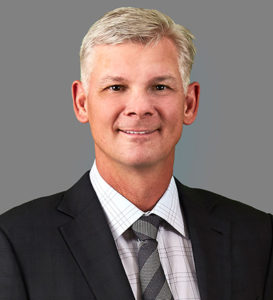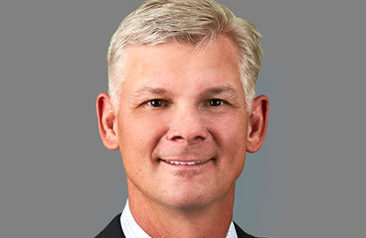I recently had the pleasure of chatting with Dr. Steven M. Dellose, the Medical Director of the Center for Advanced Joint Replacement at Christiana Care Health System in Wilmington, Delaware and President Elect for the Delaware Society of Orthopedic Surgeons. He discussed his acute pain management protocol for hip and knee replacement surgeries and the development of a new state of the art facility that would optimize the patient experience. Our conversation is summarized below.
Tell us about yourself. What is your background and what sparked your interest in acute pain management?
I am an orthopedic surgeon who specializes in adult reconstructive surgery in Wilmington, Delaware. Specifically, I focus on hip and knee replacements and perform upwards of 900 surgeries a year. Joint replacement is one of the most competitive fields in orthopedics and one of Medicare’s top volume costs. Joint replacement is competitive because these procedures help patients regain a quality of life that they may not have had before, so as a surgeon, your reputation and results matter. It is one of the most tracked fields of orthopedics as data is collected on complication rates, length of stay, and other crucial outcomes.

Acute pain management is typically top of mind for patients undergoing joint replacement surgeries due to the pain historically associated with these procedures. Twenty years ago, recovery was brutal and it took a long time to get back to day-to-day activities. Over the last ten years, the field has introduced several innovative methods to improve the surgical experience for patients, including surgical techniques, preoperative optimization, a reduction in length of stay, decrease in complication rates, and an increase in patient satisfaction. Patient satisfaction is an impactful metric since a satisfied patient will likely refer friends and family members to the practice.
My partner, Dr. James Rubano and I are always trying to make our patients’ recovery experience better, and reducing opioid consumption, while still managing their pain, is an important part of the process. We are part of the Delaware Opioid Prescribing Engagement Network (OPEN), a major initiative that started in 2017 outlining the type of medications and the quantity that should be administered after surgery. Delaware OPEN has been beneficial in terms of reducing opioid consumption and advancing multimodal pain management protocols.
Can you tell us a bit about where you perform these joint replacement surgeries?
We complete our surgeries at multiple locations within the Christiana Care Health System. It is a fairly large system in Delaware, and we have approximately 1,300 beds between two hospitals. At one of the hospitals, we have a joint replacement center which is a 30-bed unit dedicated to healthy joint replacement patients. There are 10 different surgeons operating at this center, and we complete approximately 3,000 joint replacements a year. We also operate out of an outpatient surgical center in which all patients go home the same day. We are currently in the process of building our own center, called MUVE Health, which is a hyperspecialized surgery center dedicated to joint replacement patients. The treatment protocols will be standardized with best practice, so we will be able to collect data and hopefully prove superiority over other places at a lower medical cost.
What patient populations do you serve?
Osteoarthritis is one of the most common diagnosis’ that leads to joint replacement surgery. While osteoarthritis is more prevalent in the older population, we see a wide spectrum of both men and women, ranging from 25 to over 100-years-old.
What inspired your group to create a non-opioid perioperative pain management experience for patients?
We are a subspecialized group because every surgeon is fellowship trained. In fellowship, we spend an additional year training and operating in a subspecialty of orthopedics and only operate within those bounds. So, for example, I am a joint replacement surgeon and only perform hip and knee replacements. I have one other partner who performs the same surgeries as I do, and we have worked together to develop our in-house pain management protocols. For our specific protocol, we reviewed guidance promoted by the American Academy of Hip and Knee Surgeons (AAHKS) and fellow orthopedic surgeons and fine-tuned them using years of patient data, including metrics such as length of stay, transfusion rates, infection rates, readmission rates, and other complication rates.
Our protocol begins three weeks prior to surgery with patient education. Each patient meets with an internal medicine doctor and undergoes risk assessment and optimization. Additionally, they meet with one of our care coordinators at the hospital. There is an abundant amount of education provided around patient pain and what to expect during and after surgery, as well as how to avoid complications following surgery. On the day of surgery, we provide some pre-surgery analgesia and we use a less invasive approach during surgery that causes less harm to the tissues. We also use a medication injected during surgery called liposomal bupivacaine along with other medications such as epinephrine and an anti-inflammatory. This multimodal approach helps us to ease a patients’ pain for 48-72 hours, which allows them to get moving thus reducing complications, such as constipation and blood clots. After surgery, we place patients on non-opioid anti-inflammatory medication, nerve related medicine, anti-spasm medicine, and opioids, if needed. Over the last 4 years, we have significantly decreased the number of opioids prescribed from 100 to 25 pills.
What positive downstream affects have you seen since you implemented this pain management approach?
I believe our approach to managing acute pain after surgery has changed joint replacement procedures forever. Most of our patients go home the same day which relieves the burden on the hospital. We can divert a lot of these surgeries to the surgical center which ultimately reduces health care costs. We’re also helping to eliminate some of the downstream consequences of opioids, including addiction and dependence, by significantly reducing patient opioid exposure.
What are your goals for the future?
Our goal is to get MUVE Health up and running as soon as possible. MUVE Health is based under a larger corporation called ValueHealth, a leader in the outpatient setting. When we can provide superior outcomes for our patients in this center, then we can potentially get employer driven patient referrals. Through MUVE Health, we are looking at fixed payments through a prospective 90-day payment bundle, which would drive down costs for the employer, and hopefully, premiums for their employees. The number of joint replacements is supposed to escalate and double over the next 10 years, so our work is more important than ever.



